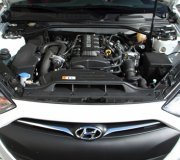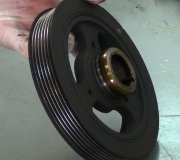Bearings can wear faster than normal from too few oil changes, raw fuel running down the cylinder walls from a leaking injector or some other no-start condition that floods the engine, and diluting the oil, or just high mileage. Antifreeze from a leaking head gasket will dissolve the first layer of metal which is very soft.
The crankshaft journals are hardened and normally wear much slower. If the first layer of metal is peeled away from the bearings, that can gouge the journals and scratch them. Those scratches will destroy new bearings. Even when there are no scratches, the journals can be worn undersize. It may be possible to just install new bearings which will increase oil pressure, but the clearance has to be measured first, then the correct undersize bearings are installed. The common undersizes are.001", .002", then.010" and.020". The.010" and.020" undersize bearings are used when a scratched crankshaft has been machined. The smaller undersizes are used when you don't have to machine the journals.
The clearance for each bearing can be measured with "Plasti-Gauge". That is a small string of putty that is inserted between the bearing and journal. When the bearing cap is installed, the putty squashes out and gets wider, then its width is compared to a chart that corresponds to the clearance. It's actually very accurate.
By measuring the clearances and inspecting the condition of the journals, your mechanic will be able to advise you if simply replacing the bearings is practical and will be beneficial.
Saturday, June 23rd, 2012 AT 6:11 AM




